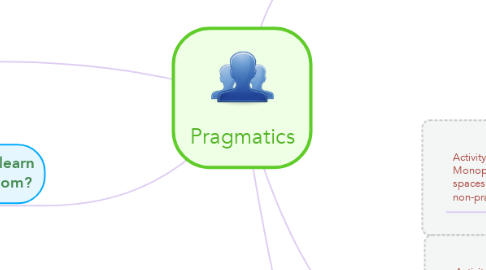Pragmatics
by Louis Colby

1. Teachers can offer a safe environment for all the students. Instead of making mistakes outside of the classroom, students can make them in the classroom and learn from them without any consequences or embarrassment.
2. Why should students learn pragmatics in the classroom?
2.1. Many students, particularly EFLs, do not get the opportunity to learn and practice pragmatics outside of the classroom (Pershey, M. (1997).
2.2. Teaching pragmatics in class can be fun and engaging for the students. In addition, ELLs and ESL students are improving their communication skills.
3. Activity 2. Read and analyze letters After showing students many examples of politeness and formality, writing sentence on the board. Afterwords, the students can read, compare, and contrast two letters written in English, and if possible two letters written in their L1 language. Have them explain the differences in the two sets of letters. In addition, they should write down their findings in a journal. Finally, have them write their own letters practicing formality, politeness, and friendliness.
4. What is the purpose of teaching Pragmatics?
4.1. To increase the learner's ability to utilize socially appropriate language for various settings
4.2. To help learners better communicate with others. Knowing the appropriate verbal and non-verbal behavior.
4.3. To distinguish between pragmatic and non-pragmatic components of text. In addition, teaching pragmatics to ELLs and ESL students can help them "fit in" the L2 environment.
5. Activity 1. Create board games Monopoly type game where students can advance a certain number of spaces if they properly distinguish between pragmatic and non-pragmatic statements or dialogues written on cards.
6. Activity 3. Role play An activity where students can interpret and act out various situations. For example, two students can pretend they are in a store. One student is an employee and the other one is a shopper. The shopper has to use embedded questions to make find out information. The shopper has to be polite the first time, formal the second time, and then direct the third time. An example can be "I was wondering where the jewelry section is" (Embedded) and "Where's the jewelry section?" (Direct).


